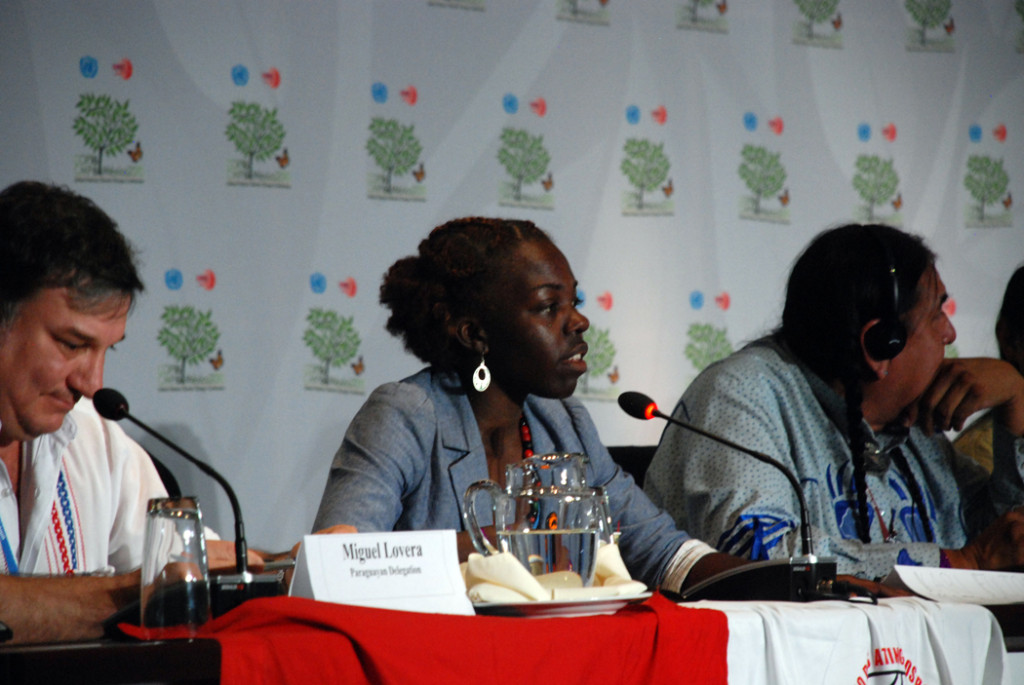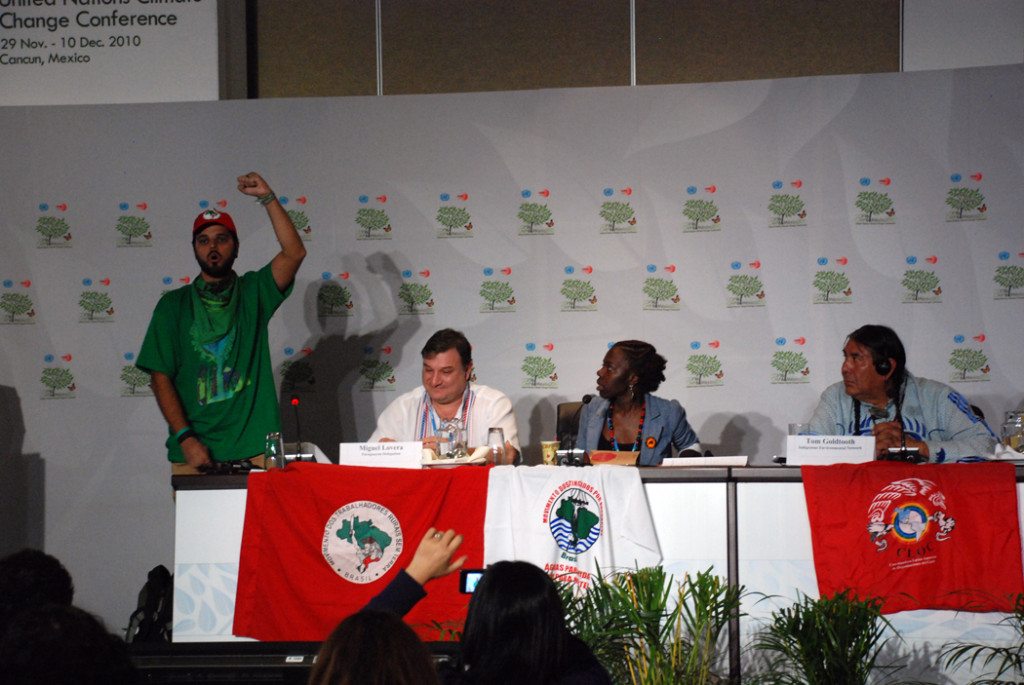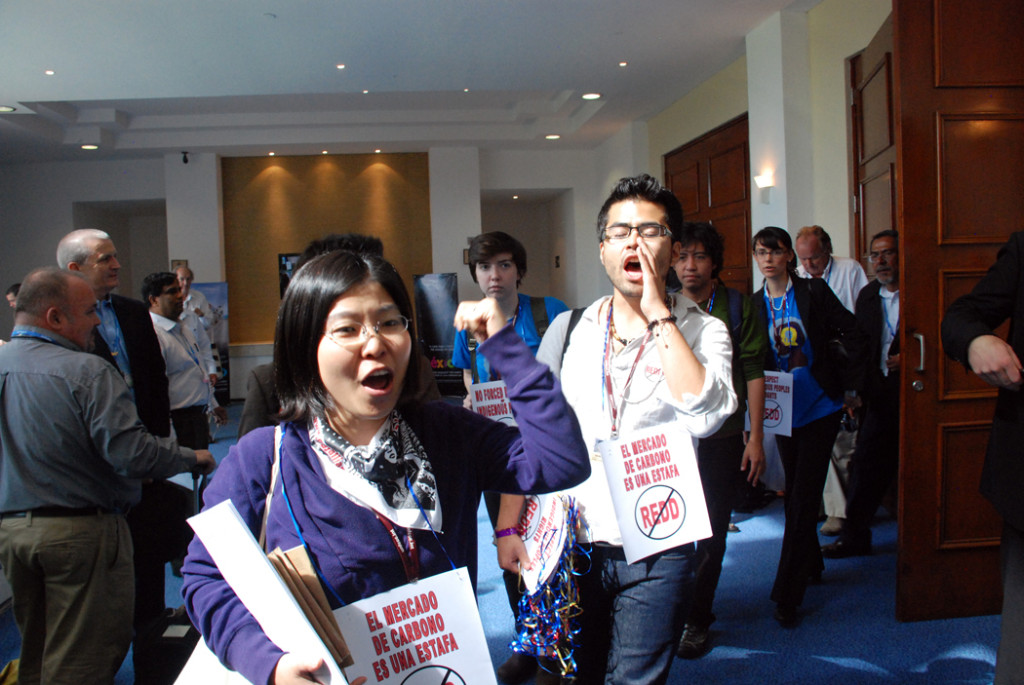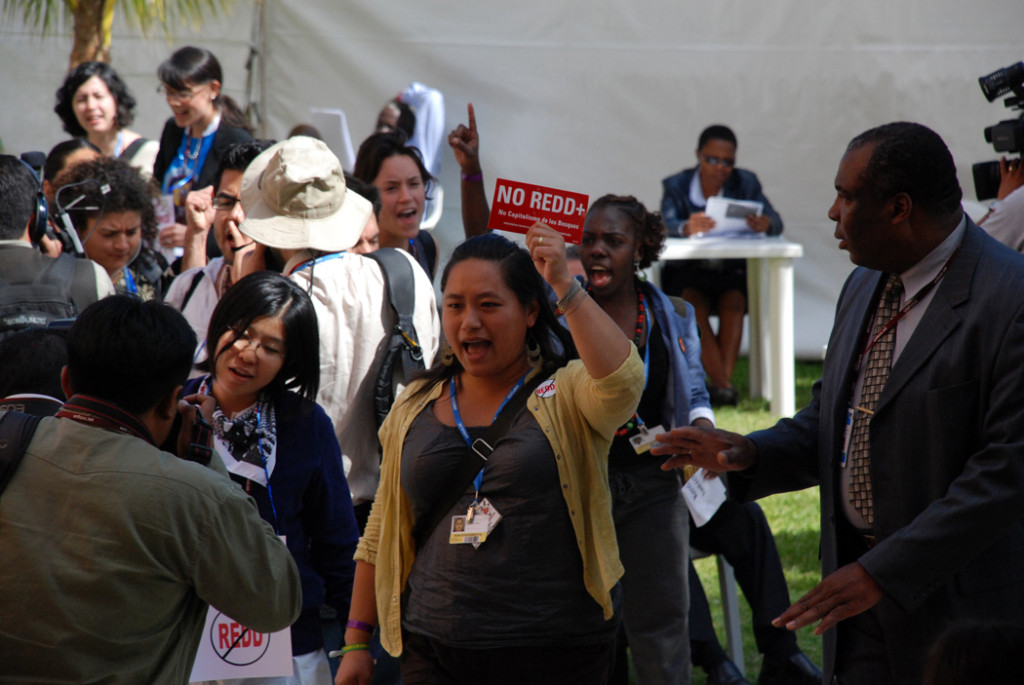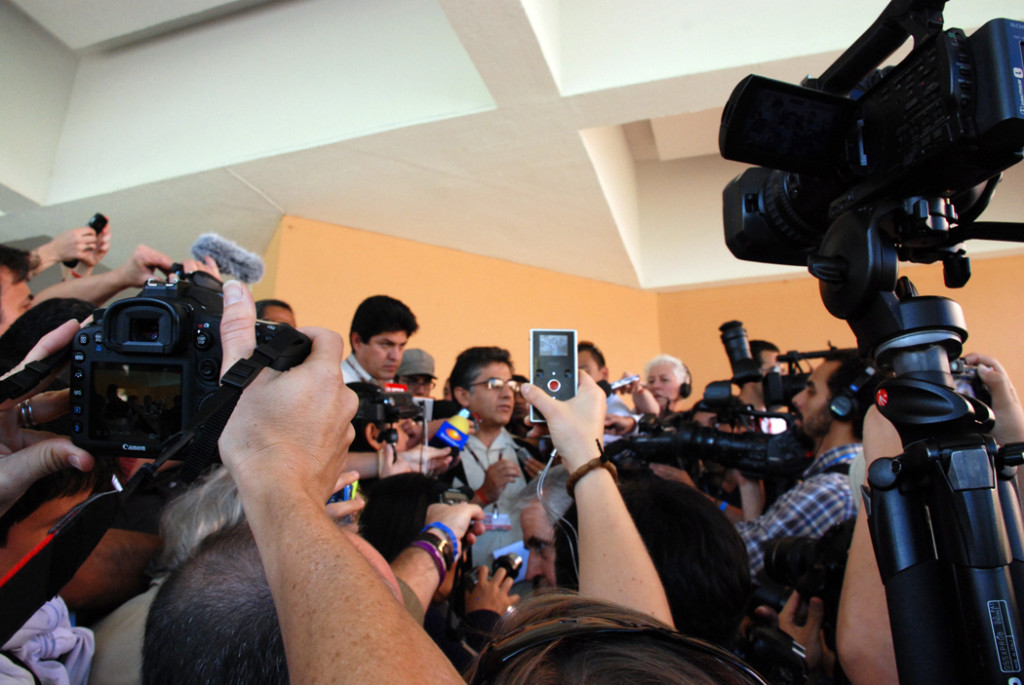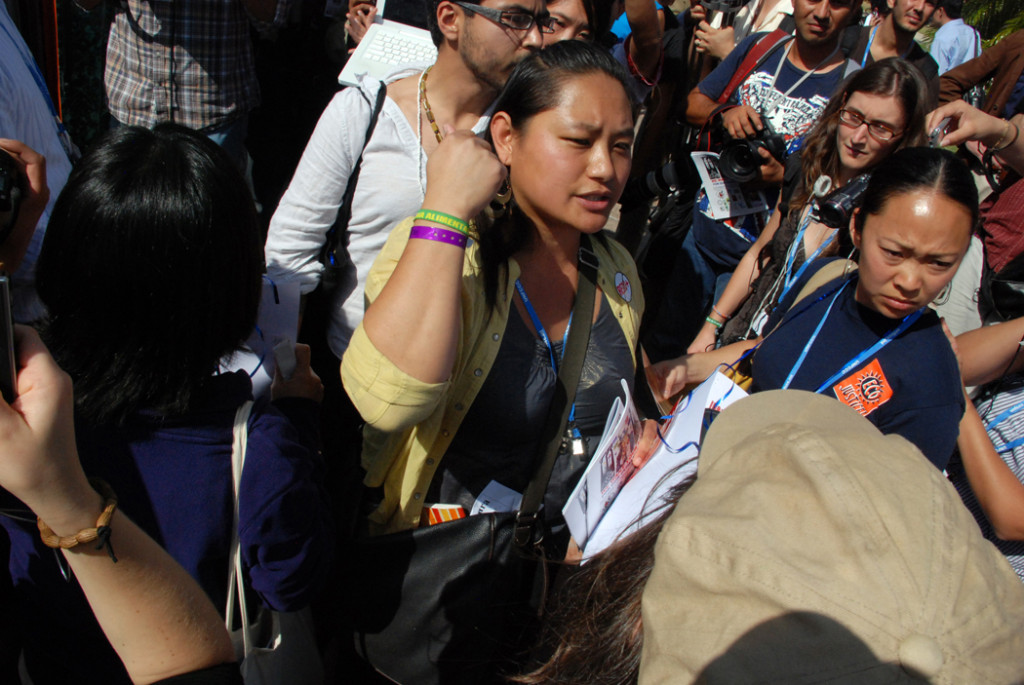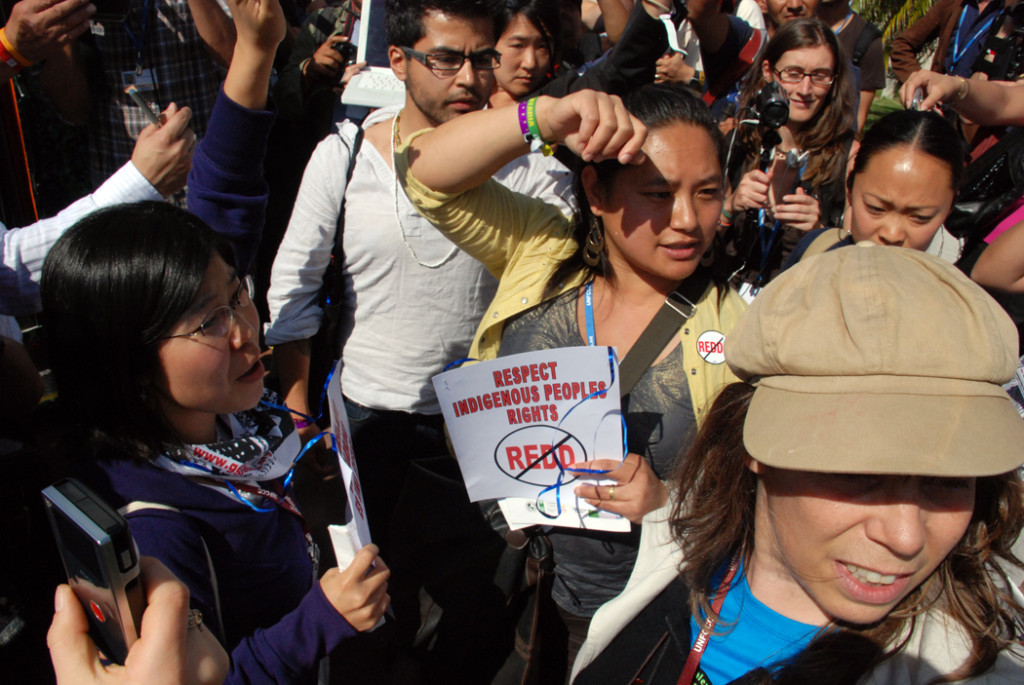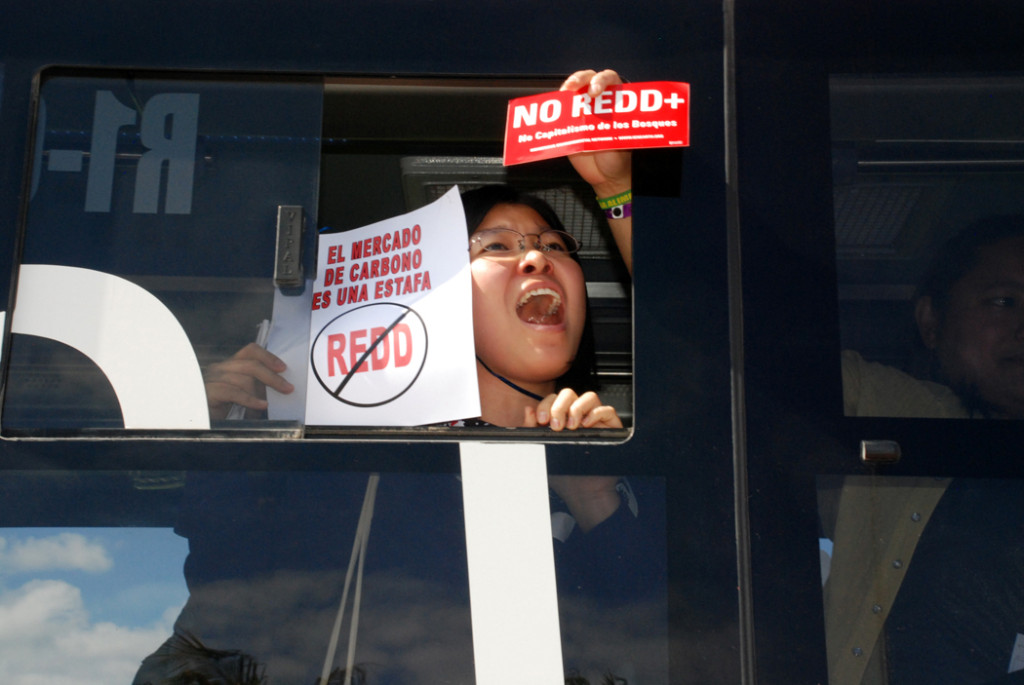Cross-Posted from Z Magazine
By Jeff Conant
All Photos by Orin Langelle/ GJEP-GFC
 In A Land to Plant Dreams, historian Yan de Vos describes the history of the Lacandon jungle of Chiapasas a series of dreams that have obsessed and overtaken those who come upon this remote mountain rainforest in the southeastern corner of Mexico. A jungle so dense and mysterious only a century ago that it was named “the Desert of Solitude,” de Vos declares that “the Lacandon is not a single reality, but a mosaic of multiple Lacandonas conceived and made concrete by many and varied interests.”
In A Land to Plant Dreams, historian Yan de Vos describes the history of the Lacandon jungle of Chiapasas a series of dreams that have obsessed and overtaken those who come upon this remote mountain rainforest in the southeastern corner of Mexico. A jungle so dense and mysterious only a century ago that it was named “the Desert of Solitude,” de Vos declares that “the Lacandon is not a single reality, but a mosaic of multiple Lacandonas conceived and made concrete by many and varied interests.”
The Lacandon’s dreamers include the commercial interests that, for centuries, have extracted mahogany, rubber, minerals, petroleum, and genetic material, leaving about 30 percent of the original forest, of which only 12 percent is said to retain its ecological integrity. Then there are the diverse communities who live there—Mestizo settlers along with Tzeltal, Tzotzil, Tojolabal, Ch’ol, and Mam indigenous farmers, some who originated there and many others who arrived over the course of centuries, escaping forced labor on the fincas or war in neighboring Guatemala, seeking a plot of land to cultivate.
Then there is the group that has been given title to the largest swath of jungle—a small tribe called the Caribes whose ancestors migrated from nearby Campeche two centuries ago and who, through a complex history involving European anthropologists, American missionaries, and Mexican government officials, became known as the Lacandones. In direct conflict with the Lacandones, and with transnational capital, are the jungle’s best-known dreamers, the Zapatista Army of National Liberation, who, beginning in the 1990s, occupied vast portions of the jungle and declared it autonomous territory.
Now, after centuries defined by its potential for producing goods, the Lacandon has entered the 21st century where it is being dreamed anew as “the lungs of the earth.” This jungle’s new dreamers include the state of California, market-oriented “environmental” groups like Conservation International, and the United Nations. Their dream is to harness the power of the burgeoning carbon market to preserve the Lacandon—the container for one-fifth of the biodiversity of all of Mexico—by turning it into a virtual carbon sink.
Enter the Governor of California
In 2006, the state of California passed the Global Warming Solutions Act (AB32), which mandates that the state reduce its greenhouse gas emissions to 1990 levels by the year 2020. The law was hailed as landmark environmental legislation for its aggressive action to reduce global warming emissions while “generating jobs, and promoting a growing, clean-energy economy and a healthy environment for California at the same time.”
Under the implementation plan for AB32, which was approved by the California Air Resources Board (CARB) in December 2010, but held up in court three months later, up to 20 percent of the state’s total mandated emissions reductions would be achieved through carbon trading, rather than through actual cuts in industrial pollution at the source. This means that industries would be permitted to delay efforts to reduce carbon dioxide emissions—along with the associated toxic co-pollutants—by purchasing carbon allowances from outside California. As one of his last acts in office, just a week before the UN Framework Convention on Climate in Cancún, Mexico last November, former California Governor Arnold Schwarzenegger signed a carbon-trading agreement with the state of Chiapas as part of AB32. The agreement is predicated on an emerging global policy mechanism known as “Reducing Emissions from Deforestation and Forest Degradation” or REDD.
Mary Nichols, the chairperson of CARB, announced California’s initiative at a high-level event in Cancún where pilot REDD projects were hailed by a gamut of global figures, including primatologist Jane Goodall, World Bank President Robert Zoellick, and Sam Walton, the CEO of Walmart. Nichols called the plan “a way for California to help the developing world by investing in forests. Saving our forests is good not only for the atmosphere,” she said, “It’s also good for indigenous peoples.” But many in Chiapas disagree. Gustavo Castro, Coordinator of Otros Mundos, a small NGO based in Chiapas, sees this as the leading edge of a new onslaught of forest carbon offsets and part of a broader trend of privatization of territories and natural resources. “Enter the governor of California, saying, ‘We’re going to approve a law in which California, the fifth largest economy in the world, is obliged to reduce its CO2, so we need to buy the fresh air from the forests of the South.’ When a natural function like forest respiration becomes a product with a price, it’s easy to see who’s going to end up with control of the forests.”
The law has also stirred up controversy in California where environmental justice advocates charge that such carbon trading schemes—reducing emissions on paper only—leaves lower-income communities of color to continue bearing the brunt of industrial pollution. Alegria de la Cruz, one of the lead attorneys for San Francisco’s Center on Race, Poverty and the Environment (CRPE), whose lawsuit has successfully challenged the cap and trade component of the bill, says that, “The overarching goal of a pollution trading system has serious implications for fence-line communities.” Her co-counsel, Brent Newell, is more explicit: “Poor people are getting screwed on both sides of the transaction,” he said. “Only the polluters are benefiting.”
In late May, a ruling by the San Francisco superior court forced the California Air Resources Board to bring its cap and trade plan back to the drawing board in order to review alternatives. But as the spearhead of efforts to forge a pathway for carbon markets, the dream of converting the Lacandon into international carbon currency will not be disrupted so easily. “Our goal,” says Chiapas Governor Juan Sabines “is that the entirety of the surface of Chiapas will enter into the market for carbon credits and methane credits, beginning through agreements with polluting sub-national states, like California.”
Selling the Forest for the Trees
 REDD projects are being piloted in many countries under the auspices of the United Nations REDD Program, the World Bank Forest Carbon Partnership Facility, the U.S. Agency for International Development, and other global bodies. The California project is one of a small handful of REDD agreements between sub-national entities. The armature of REDD is still very much in development, but in broad strokes it works like this: because trees capture and store CO2, maintaining intact forests is essential to mitigating the impacts of climate change. Under REDD, those who protect forests can earn carbon credits—financial rewards based on an assessment of the amount of CO2 a forest can store and a market-derived price per ton of carbon. They can then trade these credits to industrial polluters in order to generate revenue that, in theory, gives developing world countries and the forest-dwelling communities in those countries an incentive not to cut down trees.
REDD projects are being piloted in many countries under the auspices of the United Nations REDD Program, the World Bank Forest Carbon Partnership Facility, the U.S. Agency for International Development, and other global bodies. The California project is one of a small handful of REDD agreements between sub-national entities. The armature of REDD is still very much in development, but in broad strokes it works like this: because trees capture and store CO2, maintaining intact forests is essential to mitigating the impacts of climate change. Under REDD, those who protect forests can earn carbon credits—financial rewards based on an assessment of the amount of CO2 a forest can store and a market-derived price per ton of carbon. They can then trade these credits to industrial polluters in order to generate revenue that, in theory, gives developing world countries and the forest-dwelling communities in those countries an incentive not to cut down trees.
 Policymakers at the global level see REDD as offering a viable chance—“perhaps the last chance,” says World Bank President Robert Zoellick—to save the world’s forests, while simultaneously addressing the climate crisis, without jeopardizing economic growth. The major multilateral institutions support REDD and its growing list of spin-offs with dizzying acronyms, such as REDD+ and REDD++, which allow the policy to include aspects such as reforestation with exotic species, and offset credits for biodiversity. But many forest-dependent communities, environmental justice advocates, indigenous peoples’ organizations, and global South social movements oppose it. “It comes to seem very amiable for the governments and corporations of the North to say, ‘We’re going to pay you not to deforest,’ Gustavo Castro argues. “But in reality they’re saying. ‘We’re going to pay you so we can continue polluting’.” Tom Goldtooth, director of the Indigenous Environmental Network has called REDD “a violation of the sacred, and potentially the biggest landgrab of all time.”
Policymakers at the global level see REDD as offering a viable chance—“perhaps the last chance,” says World Bank President Robert Zoellick—to save the world’s forests, while simultaneously addressing the climate crisis, without jeopardizing economic growth. The major multilateral institutions support REDD and its growing list of spin-offs with dizzying acronyms, such as REDD+ and REDD++, which allow the policy to include aspects such as reforestation with exotic species, and offset credits for biodiversity. But many forest-dependent communities, environmental justice advocates, indigenous peoples’ organizations, and global South social movements oppose it. “It comes to seem very amiable for the governments and corporations of the North to say, ‘We’re going to pay you not to deforest,’ Gustavo Castro argues. “But in reality they’re saying. ‘We’re going to pay you so we can continue polluting’.” Tom Goldtooth, director of the Indigenous Environmental Network has called REDD “a violation of the sacred, and potentially the biggest landgrab of all time.”
To read the rest of the article, please go to Z Magazine
























































